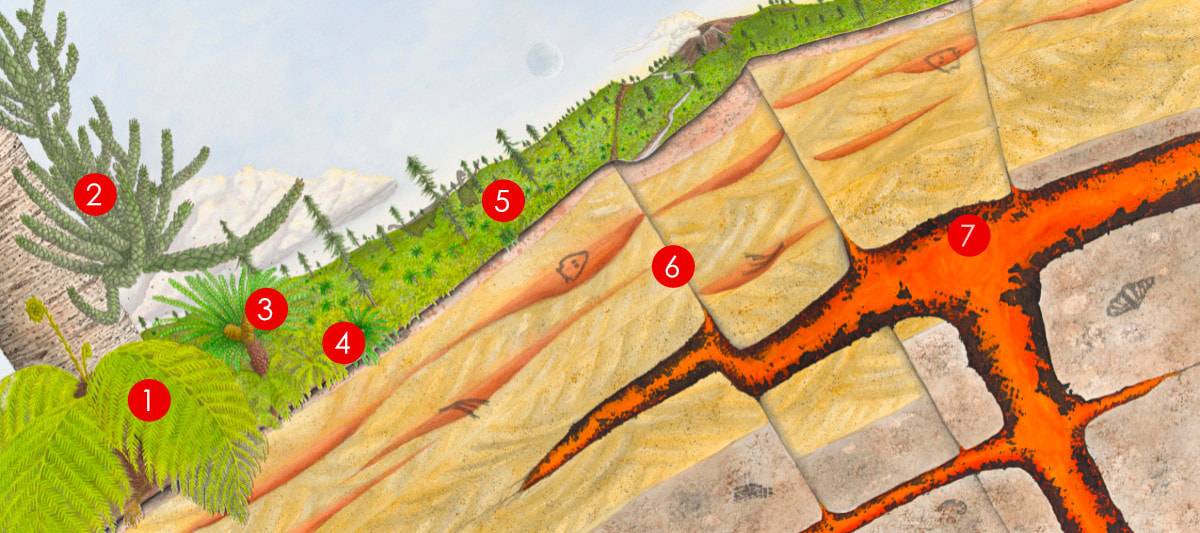The Jurassic Forest
 kunanyi/Wellingtons famous organ pipes, formed from Jurassic Dolerite.
kunanyi/Wellingtons famous organ pipes, formed from Jurassic Dolerite.
The Jurassic Period covers a span of time between 201 and 145 million years ago.
During the Jurassic the processes of continental break-up that had begun in the Triassic continued as Pangaea divided into Laurasia (Europe/North America/Asia) in the north and Gondwanaland (South America/Africa/India/Australia/Antarctica) in the south. Fragmentation of the two new supercontinents continued throughout the period; in the south Gondwanaland was split by the opening of the Indian Ocean and the separation of Africa and South America. Throughout this period Tasmania, eastern Australia and Antarctica remained in the southern polar region.
Well known as part of the age of dinosaurs, in Tasmania the Jurassic record is largely igneous in the form of the 180 million year old Tasmanian dolerites. Part of a continent-scale magmatic event, the intrusion of these rocks has in many ways shaped Tasmania’s modern landscape.
There are very few Jurassic-aged sedimentary rocks left in Tasmania. Most sediments laid down onto the Jurassic land surface have been removed by later erosion and fossils are limited to a single site at Lune River in the south of the state. Here the remains of an ancient forest, felled by volcanic eruptions, lie beneath layers of volcanic basalt of the same age (and magmatic source) as the dolerite.
During the Jurassic the processes of continental break-up that had begun in the Triassic continued as Pangaea divided into Laurasia (Europe/North America/Asia) in the north and Gondwanaland (South America/Africa/India/Australia/Antarctica) in the south. Fragmentation of the two new supercontinents continued throughout the period; in the south Gondwanaland was split by the opening of the Indian Ocean and the separation of Africa and South America. Throughout this period Tasmania, eastern Australia and Antarctica remained in the southern polar region.
Well known as part of the age of dinosaurs, in Tasmania the Jurassic record is largely igneous in the form of the 180 million year old Tasmanian dolerites. Part of a continent-scale magmatic event, the intrusion of these rocks has in many ways shaped Tasmania’s modern landscape.
There are very few Jurassic-aged sedimentary rocks left in Tasmania. Most sediments laid down onto the Jurassic land surface have been removed by later erosion and fossils are limited to a single site at Lune River in the south of the state. Here the remains of an ancient forest, felled by volcanic eruptions, lie beneath layers of volcanic basalt of the same age (and magmatic source) as the dolerite.



